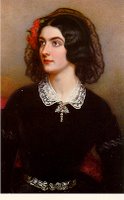 The Victorian era witnessed a political push for indecency laws.
The Victorian era witnessed a political push for indecency laws.On any given day in any given city in nearly every neighborhood, foot traffic and passersby would be compelled to overlook the shockingly common sight of partially clad prostitutes and lower-class mistresses seeing Gentlemen into their gilded coaches at curbside.
As a side effect of the rise in Industry and the increase in technology, old and new artistic mediums were being utilized for increasingly visible pornography, shocking polite sensibilities.
Legislation began to be passed during the 19th Century to regulate Centuries-old traditions of pornography and nudity-in-public. Queen Victoria’s social influence in such matters belied the fact that her political opinions were being poppy-cocked in the Houses of Lords and Commons, alike. It came into fashion to adopt her moralistic stances as well as her embellished and prudish fashions, nostalgic décor, and gracious entertainments.
Hotly contested terms were applied to nudes and displays of nudity. The 19th Century revival in interest in the Renaissance era brought to the forefront historic painted nude portraits typical of royal and courtly ladies that were considered the equivalent of a modern family portrait during the Renaissance. Society during Victoria’s reign, however, required moralistic lines to be redrawn. Determinations were made as to whether new nudes or displays of nudity were to be considered classical, or not.
As Victorian-era artistic mediums evolved, photography of boudoir ladies, in particular, became increasingly available albeit driven underground. Any number of named and undisclosed models graced many a Victorian photographer’s portfolio for posterity to view. Art galleries of today are still known to display art shows from such Victorian photographers.
Acceptable nudity in artwork during the Victorian Era included a central attraction at the Great Exhibit -- the First World’s Faire -- of 1851. A nude sculpture by American artist Hiram Powers entitled Greek Slave [displayed top right], was considered acceptable for family viewing. Since the sculpted figure had a hand strategically draped, it was reviewed on the levels of a Sistine Chapel Garden-of-Eden occupant. The statue is housed at the Corcoran Gallery in Washington, D.C.
Polite Societies separated themselves from the undereducated masses by defining pornography, as well as determining new additions to the realms of Classical Art. Ultimately, the powerful Elite Minority triumphed, shutting out displays of public nudity and pornography.
No longer tolerated were previously typical public entertainments such as troupes of bare-breasted liveried female equestrians riding through crowded Central Parks while picnickers and strolling families gaped.
Not all municipalities passed the same laws at the same time regarding pornography and public nudity, nor cared to do so. In some parts of America, all one had to do was ride over the county lines to indulge.
By Kristin-Marie











